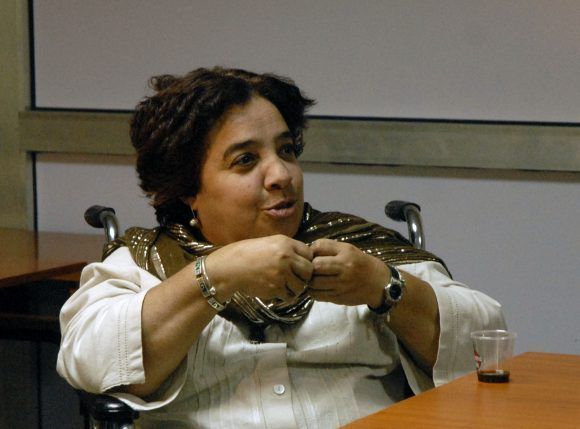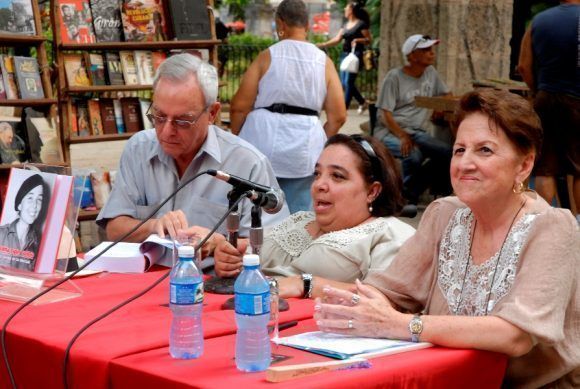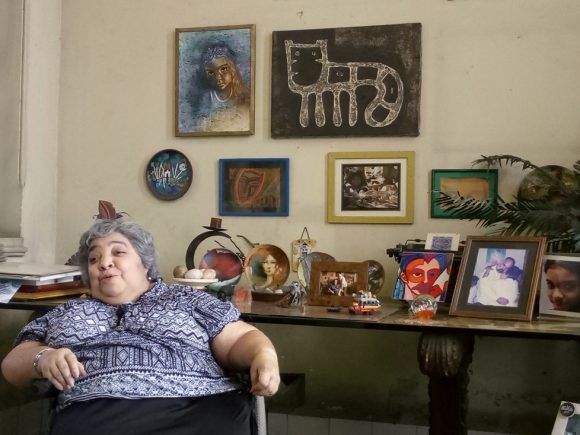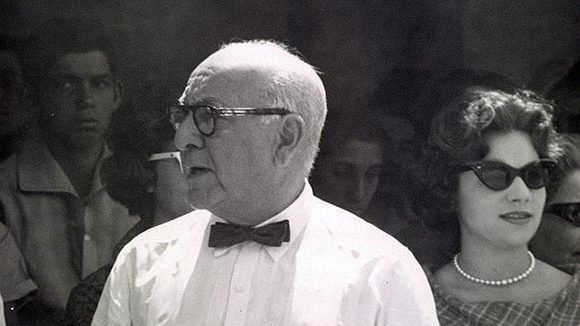CubaDebate 174
Pittsburgh synagogue shooter’s racist messages

Pittsburgh synagogue shooter posted racist messages on social networks
October 28, 2018
Translated and edited by Walter Lippmann for CubaNews.
“HIAS liked to bring invaders who kill our people. I can’t sit back and watch my people get killed. Screw your views, I’m going in,” Robert D. Bowers posted on the Internet Saturday, shortly before breaking into a Pittsburgh synagogue and shooting 11 people in an action that UN Secretary-General Antonio Guterres said is “a painful reminder of the persistence of anti-Semitism.
HIAS is a nonprofit Jewish refugee support organization, which after the massacre recalled that it is dedicated to the “rescue of people whose lives are in danger because of who they are.
Bowers almost announced his intentions days in advance, if you look at many of his social networking publications, in which he called immigrants “invaders,” distributed racist memes and claimed that Jews were the “enemy of whites.”
Bowers used Gab, an ultra-right social network taken as an alternative to Twitter that is heavily funded and favored by white supremacists, presented as “the free speech social network.” and riddled with neo-Nazi messages.
The attack left 11 dead in the Tree of Life synagogue, known for keeping a copy of the Torah rescued from the Holocaust.
The Sabbath ran and in the synagogue, located in the Squirrel Hill neighborhood, several religious ceremonies were held in different rooms, including a baptismal hall. In that context, Bowers perpetrated one of the worst attacks against the Jewish community in U.S. history, firing and shouting “All Jews must die!”
In a message condemning Saturday night’s crime in Pittsburgh, [UN Secretary General António] Guterres called on the authorities, civil society, religious and community leaders, and the general public to form a “common front” that would reverse the racist, anti-Semitic, Islamophobic, or other forms of hate such as intolerance, discrimination, and xenophobia that are gaining strength in many parts of the world.
This is in a country where immigration has become the subject of election campaigns and a way of instilling fear in voters. According to a Reuters analysis of the propaganda broadcast through October 15, 20% of the Republican Party’s ads in the congressional elections have mentioned immigration.

“All of us, in fact, are wounded by this inhuman act of violence,” said [Pope ]Francisco, who expressed his closeness to all the people of Pittsburgh “and in particular to the Jewish community, affected by a terrible attack on the synagogue.
Robert Bowers, 46, of Pittsburgh, was arrested after exchanging fire with a SWAT team. The prosecutor’s office charges him with 29 criminal charges, including crimes of violence and firearms, and violating U.S. civil rights laws.
Bowers had 21 guns registered in his name, according to authorities. Police reported that he only had one traffic violation on his record in 2015.
A few days ago, Cesar Sayoc was arrested in Florida, accused of sending parcel bombs to prominent Democratic personalities and politicians. Sayoc also posted hate messages on social networks.
(Information from agencies.)
Eight Killed by Gunfire in U.S. Synagogue

Eight Killed by Gunfire in U.S. Synagogue
October 27, 2018
Translated and edited by Walter Lippmann for CubaNews.

A SWAT team negotiated with the shooter, who in turn surrendered to the authorities. Photo: Gene J. Puskar / AP.
A heavily armed man has perpetrated a shooting inside a synagogue in Pittsburgh, Pennsylvania, before surrendering to the authorities. Eight people have been confirmed dead in the attack on the Tree of Life Jewish congregation in Squirrel Hill, where a strong police operation has taken place.
In addition, an unknown number of wounded are reported, including police officers who were shot during a confrontation with the suspect.
Police sources indicated that the gunman entered the religious center this Saturday morning while shouting, “All Jews must die.” The suspect opened fire both inside the facility and against officials who responded to the emergency call.
Initially it was reported that the man was in possession of an AK-47 machine gun, but officials later indicated that they believed it was actually an AR-15 rifle, as well as other smaller caliber weapons, NBC reports. Other media report that it also carried an alleged explosive device.
“Alert: There is an active shooter in the Wilkins and Shady area. Avoid the area,” the Pittsburgh Department of Public Safety said on Twitter.
It later transpired that a SWAT team negotiated with the shooter, who in turn turned himself in to the authorities. The suspect was injured as a result of the agents’ response, who had to use their vehicles as shields against the attacker’s armed reaction.
Officials have identified the suspect as Robert Bowers, 46, a well-known white supremacist in communities in the Network of neo-Nazis and far-right extremists, according to reports citing police audio recordings.
Some media reported alleged audios of officers who attended the scene. “The suspect talks about all these Jews having to die. We are still communicating with him,” an agent would have said. “The suspect talks about killing Jews. He doesn’t want any of them to live,” another policeman is quoted.
It transpired that at that time there was a Saturday service in different parts of the synagogue, and the version is handled that in the building there were almost one hundred people. The police claim to have received several calls from people barricaded inside the temple, and launched an evacuation operation.
The president of the United States, Donald Trump, pronounced on the matter. “There seem to be several dead. Beware of the active shooter. God bless everyone,” said the president.
On the other hand, Carnegie Mellon University, located near the Tree of Life religious center, is reported to have been closed and students were instructed not to leave the area.
(With information from RT)
Sole survivor of Havana plane crash still hospitalized

Sole survivor of the plane crash in Havana remains hospitalized in Ameijeiras
October 20, 2018
Translated and edited by Walter Lippmann for CubaNews.
Maylén Díaz Almaguer, the only survivor of the airplane crash of May 18, is being assisted by a multidisciplinary group from the Hermanos Ameijeiras Hospital in Havana, with the participation of specialists from other institutions.
According to the doctor, the patient continues the process of recovery and stabilization of organ functions, oral nutrition and infection control.
Neurological rehabilitation measures and respiratory mechanics are also maintained.
The healing process of soft-tissue injuries is also consolidated, with good evolution and the emotional state and level of cooperation of the patient with the medical treatment is adequate.
At the request of the relatives, the parts relating to the evolution of Maylén Díaz Almaguer are kept private.
Since August 1, Diaz Almaguer has received treatment and rehabilitation in the Ameijeiras. Previously, she was cared for at the General Calixto García University Hospital, where she received treatment and rehabilitation.
The accident occurred on Friday, May 18, when the Boeing 737-200 of the Mexican company Damojh, rented by Cubana de Aviación, fell to the ground just moments after taking off from Havana’s José Martí international airport, in which 112 people, including the crew, lost their lives.
Isabel Moya’s Last Interview

Isabel Moya: Challenges for women in Cuba?
Let’s not think everything has already been achieved.
 By Flor de Paz, Cuban journalist and plastic artist
By Flor de Paz, Cuban journalist and plastic artist
March 8, 2018
Translated and edited by Walter Lippmann for CubaNews.

Isabelita, during a conference at the Editorial. Photo: Flor de Paz/ Cubaperiodistas.
This is the last interview given by the director of Editorial de la Mujer, who passed away in Havana on Sunday, March 4. Her testimony is part of an audio-visual series that was recently recorded to dignify the work of Cuban journalists, who will be holding their 10th Congress this year.
The project, which will soon be broadcast on Cuban television, is being carried out by young graduates of FAMCA and is the fruit of collaboration between the Union of Journalists of Cuba (UPEC) and the Association Hermanos Saíz (AHS).
— Constance and strength? A trait of my personality. I am, I don’t want to use the term fighter because it has many meanings, but I am a combative woman who always believes in Anaïs Nin’s phrase: “Put your dreams on the horizon and start walking”. You never reach the horizon, we know that, but push.
The entrance hall and living room of Isabel Catalina Moya Richard’s house are very spacious, as in most Havana construction of the first decades of the 20th century. Both spaces are demarcated only by four circular columns, and are passageways for the furniture that inhabits it —sofás, armchairs, armchairs, tables— and, among the latter, a huge one that Enrique Sosa, a professor at the University of Havana and panelist for years in the television program Escriba y Lea [Write and Read], gave to Isabelita.
It’s San Lázaro Street, in the popular neighborhood of Centro Habana. The noises of the road buzz around the house like a volcano erupting. And Isabel, seated in front of the precious wooden table that Professor Sosa gave her, now supporting an old typewriter, a souvenir from La Catrina, photos with Juan Carlos, and Gabriela, the 20-year-old daughter of both of them, as well as other ornaments, talks about the image she has hanging on one of the walls of the room: “it is Frida Kahlo’s Blue House”. It was given her by its author, the Mexican Aurea Alanis, who was in Havana for a course in gender photography.

Isa and her daughter Gaby, as a baby.
—I’ve always been very gregarious, I enjoy being in a group, I’m very social, but I realized that I wanted to study journalism because I liked to write, I liked to research, I liked to read, I liked Humphrey Bogart’s films, from film noir, in which it was always a journalist who discovered everything. And I thought: I want to be that kind of person who investigates, who reveals secrets, she says, while Daniela Muñoz Barroso and Lena Hernández’s cameras “focus” on her eloquence.
During a pause, her mother, also named Isabel, also 72, reaches for a glass of water and medication. “All my life I have known what my faculties and shortcomings are. I have a degenerative bone disease that has forced me to use braces to walk since I was born. I’ve been operated on many times and during those periods I devoured books and books; of course, without order or concert, I read The Consecration of Spring, by Carpentier, as well as seven novels by Corín Tellado.
At that stage she tried, above all, to fill herself with a world of words that would allow her to live other lives in her own life. And then, in high school, when teachers began to direct their reading, she realized that she really had writing skills.
—But look, I never approached journalism as literature; I have not written stories or fiction as journalism. No, I’ve always been interested in writing essays on history or politics. It’s important to write about reality. And, of course, I’ve written poems, like everyone else, to give them to the groom, but not because they are publishable. Far from it.
…
—I would say that I had a beautiful childhood; a very happy growth process. Starting school was an important time because I always loved studying. In the fifth grade, I won a literature contest with a fantasy fiction story. I felt tremendous joy!
“I don’t forget that in elementary school my political life began, even though I wasn’t very aware of that reality at the time. Many times, we would go with Vietnamese hats and leaflets glued on our uniforms to support Vietnam in its war against the United States. Also, one of the first marches I participated in as a child was for Angela Davis’ freedom. Then she came to Cuba and I realized that I was already worried about those problems. Later, in the middle school and high school years, when I made friendships that I still have, and when my interests were taking shape, I definitely knew that I wanted to study journalism.”
…
Isabel Catalina Moya Richard was born in Havana on November 25, 1961. She is the eldest daughter of a family of four, including her parents. Their existence – marked by the impossibility of their organisms to assimilate calcium and, in turn, an optimism compensating for the lack of the mineral and all difficulties – can be summed up this way:

Isabelita, together with Eusebio Leal, Historian of the City of Havana, and Deputy Yolanda Ferrer.
On her feet, on crutches or in a wheelchair, she is still herself: PhD in Communication Sciences, director of Editorial de la Mujer and the magazine Mujeres, the Associate Professor of the Faculty of Communication at the University of Havana, the president of the Chair of Gender and Communication and coordinator of the International Diploma in Gender and Communication at the José Martí International Institute of Journalism; the admirable José Martí Prize for Dignity and the National Journalism Prize (for her life’s work), awarded by the Union of Journalists of Cuba in 2016 and 2017.
—When I graduated, in 1984, I was the first in the group and was placed as a disseminator in the Office of Nuclear Affairs, but I did not agree. My dissatisfaction did not go down well because that institution was very important at the time. However, I wanted to do journalism and, when I asked to be relocated, I didn’t know where I was going to work for three months. The second choice was Mujeres [Women} magazine, and I took it as a punishment.
“How wrong I was! There were opportunities that many of my classmates didn’t have. I know all of Cuba thanks to my work as a reporter for Mujeres. I have been in the Pico Turquino, on the black beaches of the Isla de la Juventud, in the wonderful landscapes of Pinar del Río, in the Escambray… And, as at the same time I was attending the correspondence section, one day I thought: “Oh, I’m going to do a postgraduate course in research methodology”. And so I was able to design a content analysis tool that allowed us to classify all the letters we received. We get a lot of information from them, both for the magazine’s work and for the attention to the problems they alluded to. And I was forever hooked on research.
With the support of the Federation of Cuban Women (FMC), Isabelita had the opportunity to do a course on feminism at Casa Morada in Chile, and to participate in numerous international events on gender. Until in one of her daily inner dialogues, she asked herself: “Well, I have to try to create an environment where theories of gender and communication converge and thus we will have a better journalism”. And in this approximation, her doctoral thesis is aligned, for which she received the highest grade.
In the School of Communication, Isabelita gave her first gender classes, a horizon reached by which she lets us see great passion. When thinking about it, she brings to mind, that master’s degree given in Villa Clara, “one of the adventures in which I enrolled with UPEC: the teachers had to stay there every school week”.
Then it was time to found the Chair in Gender and Communications at the José Martí International Institute of Journalism, thanks to Guillermo Cabrera, she said. In this way, a line of training and research was opened in our country, of which we can be proud today. This is because, in addition to having graduates from numerous graduate schools, some of them have done their doctoral theses on the subject.
—More than two hundred communicators from all over Latin America have graduated from our courses. Through the Chair, I have also been able to teach at several important universities in the region and in Europe. Two years ago, for the first time, I gave online TV classes to some high schools in the United States. Having students everywhere is a delightful experience.
…
It’s February 3, 2018, Saturday morning. Isabelita, in front of Daniela and Lena’s cameras, talks about the issues that move her the most. Irina, with a demanding expression, reveals her concern for the continuous sounds coming from Calle San Lázaro, but this is the daily environment in which she lives.

Graphic memory of the wedding of Isabelita and Juanca.
—The challenges facing women in Cuba? The first is to think that they have already achieved everything. When we look at the statistics and see the number of women in the National Assembly, the number of women scientists and women communicators, and that more than seventy percent of the prosecutors are women, and so on, we come up with a distorted idea of reality. Because we have managed to open ourselves up in professions that were not previously considered feminine, we are now in the most complex moment, that of confronting subjectivity, culture, value judgments, and customs. These are much more difficult to change, since they are based on collective imagery and social representations. This is what we sing when we sing a bolero, a salsa song or sometimes, unfortunately, a reggaeton and what the novels tell us: romantic, dependent loves.
Her reflection is based on two substantive arguments: the communicational processes in Cuba do not problematize the reductive approaches of these audiovisual spaces, nor the subjective gaps that in the seventies the media managed to tackle documentaries such as that of Sara Gómez, Mi aportación, and the feature films Retrato de Teresa. Furthermore, attitudes that unwittingly blame and associate the advancement of women with certain family crises are frequent.
Today they say, “Women don’t give birth,” but that’s not the problem. The problem is that society has put women in the dichotomy of motherhood or professional fulfillment, so society has to change in order for the couple, the family, to have more children. It is not just a matter for women because even with all the advances in science and technology, it takes an egg and sperm to conceive a human being. But the media, instead of questioning this sexist approach, return and blame women for the problem of low birth rate.
Despite being public, of representing a social system that has human beings as the center of its goals, the media in our country does not achieve a racial balance, for example, Its aesthetics are very homogeneous: the majority of women come out with straightened hair. I liked it very much that the other day I saw a young black girl with her braids on the Morning Magazine. Because, as I say, there is no problem with straightening your hair, but in that fashion, it becomes a cultural mandate that forces you to assume aesthetics with which not all want to express themselves. It is still a challenge for diversity to be understood.
Using her experience as an example of what can be done in the communication processes, Isabelita talks about a work recently published in Mujeres magazine. It was about the people who sell coffee and fried foods from a window of what was the living room of her house, of a small house. And she asks, “What about the children living in these homes, where do they do their homework? You guys get to work? How do you reconcile business and family life in a small space like that??? Oh, and what good is it, grandparents live longer, but now the child is going to marry so grandma must move out of her room, and sleep in the living room…?
I know that there are people who think that these issues are minor and that the only thing that matters is global warming, but in what happens global warming there are people who live similar tragedies every day, so it is very good that there is journalism for global warming and that there is journalism that helps in the day-to-day, a service journalism and a journalism of social activism.

Isabelita, what does journalism mean to you?
A commitment to my contemporaries, to my country, to my people; a passion, a passion that saves. I have been sick, in the hospital at terrible times, when one of those moments in which the fragility of the human body is observed. Someone passed by and said to me, “Oh, how I like your magazine”. And, listen to me, all the fears and pains have been frightened away. So I tell you, journalism is my salvation.
And she added:
Rosa Luxemburg said that socialism is not just a knife and fork problem, it is a profound cultural revolution. I, therefore, believe that journalism will help transform machismo, sexism, homophobia, racism, the inheritance of five hundred years of Western Judaeo-Christian culture, first, from an atrocious first colonialism and, later, from a capitalism that destroys human beings.
(taken from Cubaperiodistas)
Julio Lobo, the King of Havana

Julio Lobo, the King of Havana
September 21, 2018
A CubaNews translation. Edited by Walter Lippmann.
A biography of Julio Lobo has been published in the USA. It is titled The Sugar King of Havana and its author is John Paul Rathbone. We will dedicate today’s space to this character. He was the great figure of the Cuban bourgeoisie.
Lobo was born in Venezuela and brought to Havana when he was barely a year old. His father began to work very young in what would later become the Bank of Venezuela. Thanks to his efforts and intelligence, he gradually rose to management of the company when he was only 22. One day he had the bad idea of denying a loan to Venezuelan dictator Cipriano Castro and ended up in jail. Released at last, after three months of confinement, he was evicted from Caracas.
In New York, where he settled, the North American Trust Company immediately offered him the position of administrator of their Havana branch. A company that soon became the National Bank of Cuba, but was neither national nor Cuban. It was already the year 1900.
His son Julio studied in the United States and graduated as an agricultural engineer. He returned to Cuba and, in 1920, undertook the general management of Galban, Lobo y Compañía –his father’s business—which was the beginning and launching pad of his sugar empire. He became one of the richest men in Cuba.
If as a family group, the Falla Bonet’s surpassed him, Lobo was above them as an individual owner. He came to own 16 sugar mills, 22 warehouses, a sugar brokerage firm, a radio communications agency, a bank, a shipping company, an airline, an insurance company and an oil company. He was the main seller of sugar on the world market.
In his book Los propietarios de Cuba [The Owners of Cuba], Guillermo Jiménez attributes to Lobo a personal fortune of $85 million, with assets estimated at one hundred million. Rathbone, his biographer, assures us in his book that if that fortune were measured in today’s dollars it would amount to no less than $5 billion.
However, in 1960, Lobo left Havana –he would say– with a small suitcase and a toothbrush. He settled in New York and continued in the sugar business, but never repeated his past exploits. When he died in 1983, his capital, Rathbone says, was estimated at $200,000. In fact, according to the biographer, very few of his generation prospered in exile.
Unlike the Falla Bonets who, when the Revolution triumphed, took no less than forty million dollars out of Cuba, Julio Lobo, a furious nationalist, continued to invest in the sugar industry and other companies, while continuing to expand his valuable art collection. After all, he knew he had always been smarter than his rivals… but that trust led him to take no precautions whatsoever.
He never wanted to intervene in politics, but he was a convinced opponent of Batista. He was a supporter of Batista’s removal, without caring who would succeed him.
In 1957 he gave 50,000 pesos to the “Accion Libertadora”, an anti-Batista organization, which in turn gave half of that money to the “26th of July Movement”. This led him to believe that he could make conditions on the Revolution.
Rathbone assures his readers that Ernesto Che Guevara showed him otherwise. He summoned him to his office. The guerrilla commander, who had become president of the National Bank of Cuba, told him that they had reviewed his accounts and that Che congratulated him for the efficiency of his companies, and for not owing a single penny to the Treasury, but he also told him that his assets would be intervened. He made him an offer: He could remain at the head of his sugar mills. In exchange, he would receive a salary from the State. Needless to say, Lobo refused. It was then that he packed his small suitcase.
Lobo’s purchase, in 1958, of the three mills owned by Hershey was very controversial. This was a very expensive transaction, because, already in exile outside Cuba, his creditors demanded payment of the outstanding debt for those mills that were no longer his.
His specialized sugar library was the best and most complete in Cuba and perhaps in the whole world. His art gallery featured works by Da Vinci, Rafael, Miguel Ángel and Goya, among other great painters. His collection of incunabula and unique and rare books was famous.
He was obsessed with the personality of Napoleon and came to possess a large collection of relics and more than 200,000 documents, which he left in deposit to the nation and which are treasured today in the Napoleonic Museum in Havana.
He was also interested in Hispanic-American subjects. Lobo was a Renaissance man, says Rathbone, extremely curious, with a deep knowledge of business, the subject of sugar, politics and history, and an impressive general culture.
He never had a yacht of his own and barely a social life. He was a compulsive worker, up to 16 hours a day. His hobby was gardening. He also had a penchant for collecting Hollywood actresses. He had a long relationship with Joan Fontaine and even proposed to Bette Davis. On one occasion he ordered that one of his swimming pools be filled with perfumed water to entertain the movie star and synchronized swimming diva Esther Williams.
He spent his final years caring for his first wife, whom he had divorced many years earlier. By then he could only move his eyes. He asked to be buried in a guayabera. A Cuban flag covered his coffin. That was his wish.
CIMEX report on La Puntilla investigation

CIMEX Reports Results of Investigation into La Puntilla Shopping Center events
Translated and edited by Walter Lippmann for CubaNews.
CIMEX reports the results of the investigation into the events in La Puntilla Shopping Center
Following the publication of the article “Assault in La Puntilla: 15 Thousand Apples for a Single Client”, last Sunday, September 9, the CIMEX Business Group reports that:
The West Havana Branch (which includes La Puntilla), and the Supervision Directorate of the CIMEX Business Group proceeded to denounce the incident before the judicial authorities and to impose the disciplinary measure of Permanent Separation from the company to the following cadres and civilian workers:
- Raysa Lidia Pupo Brito, civilian cadre, Manager of the Playa complex.
- René Barreda Sánchez, civilian cadre, Head of Commercial Unit, La Puntilla store.
- Adonis Semat Ortiz, civilian worker, store clerk, La Puntilla store.
- Michel Borrero Ortiz, civilian worker, store clerk, La Puntilla store.
- Yasiel García Serrano, civilian worker, store clerk, La Puntilla store.
- David Roig San Juan, civilian worker, store clerk, La Puntilla store.
- Zulema Bos Ofarril, civilian worker, all-around clerk, La Puntilla store.
The Carlos III Store applied disciplinary measure of Permanent Separation from the company to
Joel Muñiz Lorenzo, civilian worker, Driver D.
The CIMEX Business Group considers it necessary to inform our people that the clear majority of its more than 35,000 workers are committed to combating lack of discipline and illegalities. There is no room for impunity in this task. It also reiterates its determination to address and deal with the questions and complaints raised by customers in order to constantly improve the quality of services in our commercial units.
“Assault” on La Puntilla

“Assault” on La Puntilla: 15,000 Apples for a Single Client
 By Iroel Sanchez
By Iroel Sanchez
Cuban engineer and journalist. He works in the Office for the Informatization of Cuban Society. He was President of the Cuban Institute of the Book. On twitter @iroelsanchez
September 9, 2018
Translated and edited by Walter Lippmann for CubaNews.
Some time ago, in an article titled “Against the third blockade,” [published 2014]I spoke of the fledgling oligarchs who already control food distribution networks in Cuba, this Friday, I had the opportunity to see them act. It was as a result of the sale of apples in the La Puntilla de Primera y “O” store, in the Havana neighborhood of Miramar.
Organized almost militarily and faced with the complicit indifference of the employees, a platoon of strong young men appeared – a good part of them “in uniform” with clothes bearing the U.S. flag – who, in a few minutes, bought 15,000 apples (150 boxes of 100). Using the pallets and wheelbarrows of the store, they arranged to take them out, using transportation from the CIMEX corporation itself, which the head of the group, [acting] with total authority, insistently demanded from a cell phone and a luxurious and modern black car with a private-car’s license plate.
When asked how this was possible, a store employee replied: “We can’t do anything”. An empty “information desk”, but [only] with a sign with the telephone numbers of “Customer Service” of the Panamerican chain of stores. When calling, at first they do not answer and after insisting several times they say that they already knew about the situation were taking care of it.
But in one hour, despite the promise of the only employee who tried to give an explanation: that the manager of the complex was on his way, he never arrived. Remember, the central office of the Corporation is a few meters from the store in a building named Sierra Maestra (!!!!). The calm with which the “platoon” acted suggested their conviction of their impunity.
I know that before this publication the company will try some answer, maybe there will be explanations and some disciplinary measure but let’s transcend the anecdote that surely told daily and get to the bottom. Let’s not collect more water with baskets:
A store that not long ago caught fire, was completely rebuilt, with cameras, guards, brand new cash registers and expensive security devices, for whose benefit? Imports with scarce foreign currency, for whose benefit? It is impossible not to remember what our colleague Javier Gómez Sánchez told us about how the same “uniform” prevails in the wardrobe of nationals who vacation in hotels in Varadero.
It is all very well for the press and prosecutors to go to the construction material stores, but they must follow the trail to the mansions that have been built with them, such as those on the road to Marbella, sorry, I meant Belllamar, in Matanzas. Marbella, in Spain, is where the oligarchs who ransacked post-Soviet Russia erected their residences.
Feature Film on Cuban Five

Penélope Cruz and Gael García Bernal will act in a film about the Cuban Five
September 6, 2018
Translated and edited by Walter Lippmann for CubaNews.

Spain’s Penélope Cruz and Mexico’s Gael García Bernal will join Venezuelan Edgar Ramírez in the “Wasp Network” cast. Photo: El Comercio
Spain’s Penélope Cruz and Mexico’s Gael García Bernal will join Venezuelan Edgar Ramírez to round off the cast of French director Olivier Assayas’s Wasp Network, RT Features and CG CINEMA announced today in a press release.
WASP NETWORK, whose plot is based on the book THE LAST SOLDIERS OF THE COLD WAR by Brazilian writer Fernando Morais, will focus on the story of a group of Cuban anti-terrorists sent into the United States during the 1990s.
Morais‘ book tells the story of Gerardo Hernández, Fernando González, Ramón Labañino, Antonio Guerrero and René González, the Five; and Juan Pablo Roque, another member of the network who returned before the arrest of his companions.
The cast of this feature film will also feature Brazilian Wagner Moura, known for his performance of Colombian drug trafficker Pablo Escobar in the series Narcos.
Winner of the Oscar for Best Supporting Actress for VICKY CRISTINA BARCELONA (2008), Penélope Cruz released this year the film TODOS LOS SABEN, in which she shares the stage with her husband Javier Bardem, and played Donatella Versace in AMERICAN CRIME STORY: The Assassination Of Gianni Versace, for which she was nominated for the Emmy for Best Supporting Actress in a Limited Series.
Gael García Bernal, winner in 2016 of the Golden Globe for best actor in a comedy series by Mozart in the Jungle, starred this year in the film Museo by Mexican director Alonso Ruizpalacios.
Another film project that will deal with the same theme is currently in production by a Canadian team.
(With information from EFE)
Facebook and Radio and TV Marti

Will Facebook close the fake accounts of Radio and TV Marti?
Cuban journalist. First Vice-President of UPEC and Vice-President of FELAP. She is a Doctor in Communication Sciences and author or co-author of the books “Antes de que se me olvide“, “Jineteros en La Habana”, “Clic Internet” and “Chávez Nuestro”, among others. He has been awarded the “Juan Gualberto Gómez” National Journalism Prize on several occasions. Founder of Cubadebate and its Editor-in-Chief until January 2017. On twitter: @elizalderosa
Translated and edited by Walter Lippmann for CubaNews.
The new digital platforms favor the emergence of groups of individuals organized like a claque, ready to unconditionally applaud the one who pays. Anyone who isn’t in a blockaded country like Cuba can create content, invest in it for specific groups to see and even rent or buy virtual applause to generate “likes” on Facebook or “followers” on Twitter.
This is the business model of these technology platforms, thanks to which, for example, in the first quarter of 2018 Facebook had a turnover of $11.79 billion, almost four billion more (49 percent) than a year ago. Of that total, about 98.5 percent comes from advertising.
Such a thing happens every day and it is difficult to generate a perception of popularity on networks without hundreds of thousands of followers. These are usually achieved by registering artificial identities that promote messages of support, and the favor is not free. There are hundreds of companies that offer this service without any complexes. Simply enter “buy followers” in any search engine to find them. And it is not expensive: the price of a thousand followers is between 15 and 20 dollars. Getting ten thousand more people to follow us costs less than $120.
“Troll farms” – editors responsible for spreading false information on the Internet – have been used by politicians, entertainment stars, American spies, Donald Trump’s campaign team, Macri’s campaign team, the British military, Israeli propaganda organizations and many others who have made these huge profits from the platform founded by Mark Zuckerberg possible and placed it among the ten largest companies in the world, according to its value on the stock exchange.
The numbers are impressive and not just for the profits: a study published in March 2017 by the universities of South Carolina and Indiana estimated that, within Twitter, the proportion of “troll farms” that use automated applications to replicate messages (known as bots) was between 9 percent and 15 percent of their total users. The number of automatically-controlled fake profiles is between 30 million and 48 million.
Not out of moral compulsion, but to tune in to Washington’s anti-Russian and anti-Iranian discourse, Facebook has been willing to shut down some “troll farms” and escape, even momentarily, from the wave of criticism that has fallen on it for buying and selling data without the consent of its more than 2.4 billion users. This is how hits decided to eliminate hundreds of accounts with “inauthentic behavior” on Tuesday, according to a press release
We eliminated 652 pages, groups and accounts for coordinated “non-authentic behavior” that originated in Iran and were targeted to people across multiple Internet services in the Middle East, Latin America, the United Kingdom and the United States.
But while Facebook eliminates foreign-generated fake accounts, allegedly of Russian or Iranian origin, it tolerates the U.S. government’s “troll farms” without any crisis of conscience. Before any of us had heard of this machinery of fake accounts, fake news and Cambridge Analytica – the London-based company that intervened in more than 200 elections by manipulating the users of Facebook – the Pentagon was already publicly boasting that it was using the blue thumb network as propaganda bait for its operations.
Defense One magazine reported in November 2016 that Michael Lumpkin, former director of the Global Engagement Center (GEC, Pentagon propaganda department), described how the Center used Facebook data to maximize the effectiveness of its operations:
“Using Facebook ads I can get an audience, choose Country X, a specific age group between 13 and 34, filter people who like Abu Bakr Al Baghdadi or any other group… and I can shoot and hit them directly with messages,” Lumpkin said. He stressed that with the right data, effective message targeting can be done with only pennies per click.
Yesterday, the Miami New Times, a weekly newspaper in Florida, released a document proving that a US government-funded broadcasting organization is creating fake Facebook accounts in disinformation operations. These are directed against a country, Cuba, that has not done the slightest damage to the United States and that cannot access the Facebook ad manager because of the US blockade laws.
The Broadcasting Board of Governors (BBG) will spend more than $23 million in fiscal year 2019 on its Office of Broadcasting to Cuba (OCB), which controls Radio and TV Martí, and its projects include no less than a troll farm.
According to the budget requested of Congress for 2019, OCB will use the money in fake Facebook accounts of the kind that it perfectly classifies as “non-authentic behavior” to promote regime change on the island.
Considering the disaster of inefficiency, waste and corruption that has accompanied Radio Martí and TV Martí in 33 years of existence at a cost of more than $800 million at the expense of the US taxpayer, the former head of the US Interests Office in Havana, Vicki Huddleston, echoed on Twitter the news of the digital propaganda project against the island, to which she added a phrase of contempt: “Same-old-same-old!!”.).
Will Facebook close the US government’s “non-authentic behavior” accounts, starting with those of Radio and TV Martí? To be or not to be, that’s the question, right, Zuckerberg?
(Taken from Cubaperiodistas)
Minor Accuses Weinstein Denouncer of Abuse

Minor Accuses Pioneer in Complaints Against Harvey Weinstein of Sexually Abusing Him
August 20, 2018
Translated and edited by Walter Lippmann for CubaNews.
Italian actress and director Asia Argento, a figure in the #MeToo movement after accusing producer Harvey Weinstein of rape, agreed to pay $380,000 in a settlement to a young man who said he was sexually assaulted by her, according to The New York Times.
The victim was rock actor and musician Jimmy Bennett, who reported being sexually assaulted by Argento in 2013 in a California hotel, according to the newspaper. In that state, the age of consent for sexual intercourse is 18. Bennett had worked with Argento playing his son in a movie.
The agreement would have been reached in the months following the revelations on the Weinstein case in October last year. In a letter dated April to Argento confirming the final details of the agreement and the payment schedule, the actress’s lawyer referred to the money as ‘help for Mr. Bennett’.
“We hope it never happens to you again,” attorney Carrie Goldberg wrote to her client, “you’re a powerful and inspiring artist and it’s miserable that you live surrounded by shitty individuals who have taken advantage of your strengths and weaknesses.
For the young actor, who as a child captivated Harrison Ford and Bruce Willis, that 2013 meeting was “a spiral of emotional problems,” reports the New York Times, citing the contents of the documents. According to the information, it was so traumatic that it hampered Bennett’s work, so his lawyers were initially seeking $3.5 million in damages because his mental state had affected his income.
The New York newspaper assures that it has had access to the accusations of the young actor and to the subsequent financial agreement reached by Argento and Bennett’s lawyers, who are now 22 years old, through documents that have been sent to them anonymously. These documents, which were sent via encrypted mail, include a selfie photograph, dated May 9, 2013, of the two actors lying in bed, reports Efe.
The newspaper adds that it has tried “repeatedly” to contact those involved in this issue without success. However, Bennett’s lawyer, Gordon K. Sattro, told the newspaper that his client would not agree to be interviewed about it and that he would “continue to do what he has been doing in recent months and years: focus on his music.
“A traumatic sexual assault”
Bennett was 17 when the alleged incident with the then 37-year-old actress occurred. Bennett’s lawyers described the meeting at the hotel as a “sexual assault” that traumatized their client, threatened his mental health, and called for compensation of 3.3 million euros.
For Bennett, seeing Argento present herself as a victim of sexual harassment was the straw that broke the camel’s back. It made him relive that episode in 2013, of which there is even a photo left on the actress’s Instagram profile. “What he felt that day came back when Argento became the voice of Harvey Weinstein’s victims,” Bennett’s lawyer said in the complaint document.
For Bennett, the Italian actress was both a mentor and a mother, and they had a certain amount of contact since they met in 2004 during the filming of The Heart is Liar, which she directed and starred in with him. The argument revolved around the relationship between a drug-addicted prostitute (Asia Argento) and her son (Jimmy Benett), and the relationship between them revolved around this mother-child relationship. Until May 9, 2013, she wrote on Instagram: “Waiting for my long-lost child Jimmy Bennett”, with a selfie at the door of the Ritz-Carlton Hotel in Marina del Rey, California. He replied, “I am coming”.
The New York Times’ account of the events recalls that the actor arrived in the room with a family member because of a vision problem that prevents him from driving. Argento asked the companion to leave them alone, gave him alcohol to drink and showed him some notes he had written for them. Then she kissed him, pushed him to bed, took off his pants and gave him oral sex. Finally, she climbed on top of him and they had a sexual relationship. She also asked for some photos to be taken and shared on social networks.
In the image that came to the newspaper along with the anonymous documentation, you can see them both with their torso uncovered. After the episode in the hotel room, they ate lunch together and, on the way home, Bennett began to feel “extremely confused, mortified and upset. A month later, however, she sent Argento a Twitter message with a picture of a bracelet she gave her that said, “I miss you, Mommy.”
Financial and family problems
Bennett’s life wasn’t easy back then. Around the time of his meeting with Argento, he had confronted his mother and stepfather in court, whom he accused of having thrown him out of the family home, of having stolen his possessions and of having appropriated, over the years, at least one and a half million dollars of his savings. Bennett was broke at the time and owed two months’ rent.
The financial agreement recently reached by the actors does not prevent the young person from making what happened public, but it does prevent him from demanding it. Nor would I be allowed, after accepting the money, to publish the photo of both of them. According to the New York Times, and although it is not known if both have spoken since the signing of the agreement, Argento would have given him a “like” on Instagram to a selfie of the actor in which he appeared caressed.
Asia Argento became a powerful voice in the #MeToo movement after accusing Weinstein of raping her in a hotel during the 1997 Cannes Film Festival when she was 21.
At the close of this year’s Cannes Film Festival, the actress told the audience: “Things have changed. We’re not going to let them get away with this.
(Taken from El Mundo)
| M | T | W | T | F | S | S |
|---|---|---|---|---|---|---|
| 1 | 2 | 3 | 4 | 5 | 6 | |
| 7 | 8 | 9 | 10 | 11 | 12 | 13 |
| 14 | 15 | 16 | 17 | 18 | 19 | 20 |
| 21 | 22 | 23 | 24 | 25 | 26 | 27 |
| 28 | 29 | 30 | ||||














